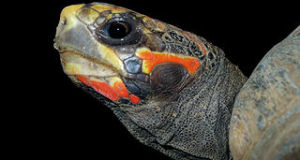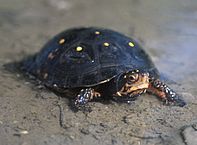 As I noted in an earlier article (Canned Insects and Other Invertebrates, July 1, 2008), several companies are now marketing canned grasshoppers, snails, silkworms and other invertebrates. I believe these to be an important means of providing dietary variety to a wide range of captive reptiles and amphibians.
As I noted in an earlier article (Canned Insects and Other Invertebrates, July 1, 2008), several companies are now marketing canned grasshoppers, snails, silkworms and other invertebrates. I believe these to be an important means of providing dietary variety to a wide range of captive reptiles and amphibians.
I have recently been experimenting with the canned shrimp offered by Zoo Med. What caught my interest was the fact that the shrimp used, Macrobrachium nipponense, are a freshwater species. Freshwater shrimp are an important and often dominant part of the diets of a great many aquatic animals, and their nutritional value varies greatly from that of both insects and fish – yet they are difficult for the average pet owner to procure.
Of course, it is great fun to collect and breed freshwater shrimp, but how many of us actually have the chance to do this? Generally, we are left to use pieces of marine shrimp (usually pre-cleaned and thus missing nutritionally valuable internal organs) purchased at food markets, or frozen/freeze dried marine species marketed for the tropical fish trade. While such are useful, they are far from ideal, as there are a number of health issues involved in the long term feeding of marine species to freshwater pets.
The shrimp used by Zoo Med are small, whole animals. Feeding them to a large turtle would be impractical, but they are ideal for innumerable smaller creatures. I have found them to be readily accepted by a wide variety of creatures, including aquatic frogs (African clawed, dwarf African clawed), newts (eastern, marbled, ribbed), aquatic salamanders (sirens, axolotls) and turtles (spotted, painted, snapping, musk, mud).
Tropical fish of all kinds also relish these shrimp, as do US natives such as Banded Sunfish and Tadpole Madtoms. I have also fed them to other freshwater invertebrates, such as Bamboo Shrimp, African Filter-feeding Shrimp, Crayfish and Caddisfly Larvae.
I am excited by the possibilities offered by this product – perhaps the nutrition contained in them holds the key to maintaining delicate aquatic amphibians and other creatures that now fare poorly in captivity.
 That Reptile Blog – Reptile, Amphibian and Exotic Pet Care and Information
That Reptile Blog – Reptile, Amphibian and Exotic Pet Care and Information


